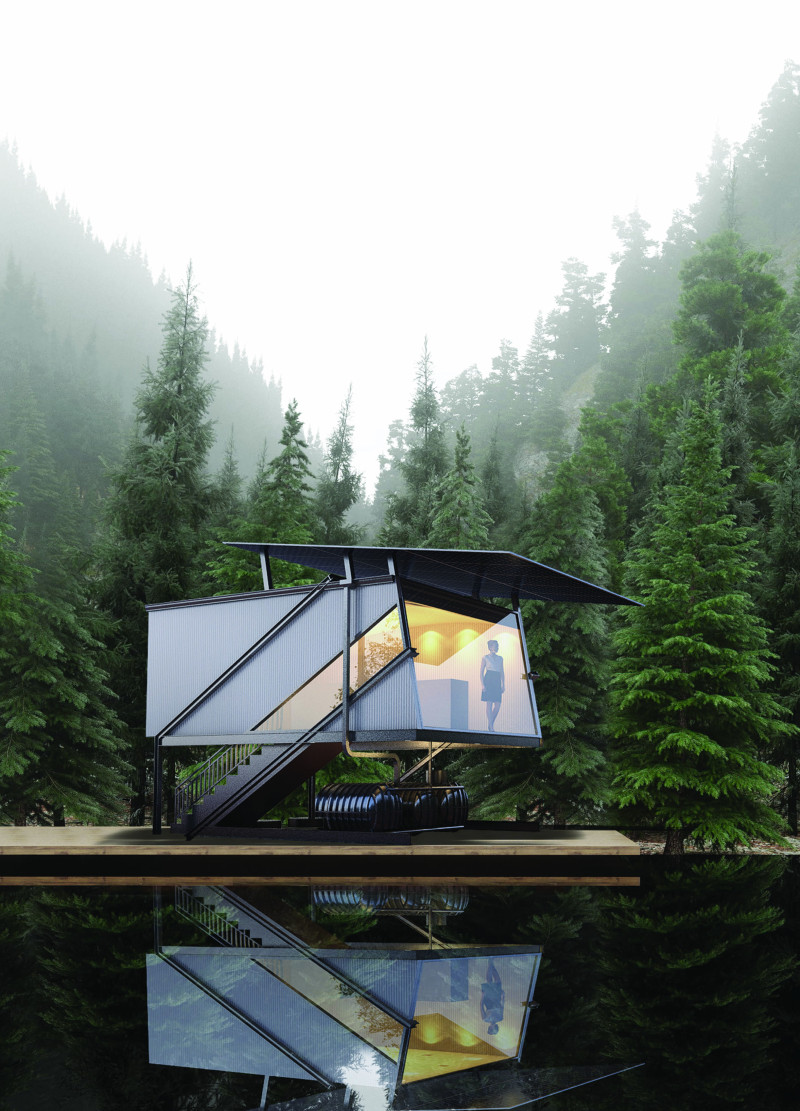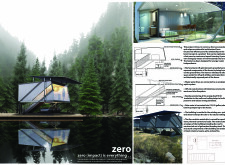5 key facts about this project
The design is a net zero energy microhome that embodies a strong commitment to sustainability. It is intended for both urban and suburban environments, promoting self-sufficiency while aiming to reduce its ecological impact. The concept focuses on using renewable energy sources and efficiently managing water resources. The result is a functional living space that works in harmony with its surroundings.
Rainwater Harvesting System
This microhome features a rainwater harvesting system that collects and stores rainwater in 55-gallon barrels. This approach helps ensure that the home is independent of municipal water supply systems. By effectively managing this resource, the design highlights a practical method of sustainable water usage.
Solar Energy Production
The inclusion of a roof-mounted solar array allows the microhome to generate its own electricity. By producing energy on-site, the home aligns with its goal of achieving net zero energy consumption. This renewable energy system shows a forward-thinking attitude towards modern housing solutions, making efficient use of natural resources.
Elevated Design Concept
The design of the home is elevated, which serves multiple practical purposes. The space beneath the structure accommodates off-grid utilities, making these components easy to access. This elevation also enhances the home's profile, allowing for better landscaping and drainage options. The design respects the natural landscape and integrates the building with its environment.
Material Selection
The building features a fire-resistive metal skin, designed for durability and practicality. Made of galvanized sheeting steel, the outer layer protects the microhome from various weather conditions. In addition, the walls and ceiling are insulated with R-50 material, optimizing thermal performance and reducing energy needs throughout different seasons.
The overall design prioritizes efficiency and simplicity. With its innovative features and thoughtful use of materials, the microhome represents a clear vision of responsible and modern architecture. It serves as a practical example of how contemporary living can coexist with ecological principles.



















































